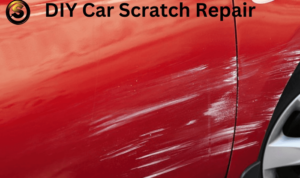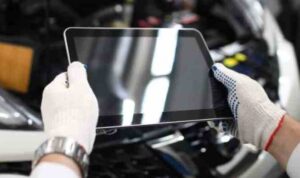Advanced Driver Assist Fix – Newer cars are equipped with advanced driver assistance systems (ADAS). These advanced safety systems use sensors to collect information about the vehicle’s environment Sensors collect data that provides safety alerts ADAS may also use sensor data to determine when to temporarily take control of the vehicle’s braking or steering for the sake of driver safety. Vehicle ADAS sensors, like all sensors, are as accurate as possible Enter ADAS calibration, a rapidly growing need in the automotive industry
In this article, we’ll explain ADAS calibration, provide an in-depth summary of the topic, and give four examples of common sensors that require it.
Advanced Driver Assist Fix

Before understanding what calibration is, we must first answer the question of what ADAS is. ADAS stands for Advanced Driver Assistance System These are automatic safety features that consist of a set of systems and sensors that help improve driver safety.
Tesla’s Full Self Driving Is Now 33.3% Cheaper, Eap Owners Who Upgrade Pay Only $2k
When a vehicle is damaged and repaired, the ADAS system must perform a proper reset to return the vehicle to its pre-accident condition. This ADAS calibration is critical to ensure that all systems are designed and operating to maintain the highest safety standards.
ADAS calibration (and recalibration) is the correct physical alignment, testing and electronic targeting of sensors that collect data to inform your vehicle’s advanced driver assistance systems (ADAS), such as forward collision warning (FCW), lane departure warning (LDW). automatic Emergency Braking (AEB) etc.
Looking back tells the sensors where to look. It also shows the position sensors with the vehicle. Most ADAS sensors require precise targeting As AAA explains, “…a sensor in the car that is out of alignment by an inch or even a degree will be significantly off-axis by as much as 50 or more feet on the road. Similarly IIHS Advisor 43 According to , a change of up to 0.6 degrees will halve AEB’s response time
On a new vehicle, ADAS sensors are professionally set to factory default settings All sensors point to the same, correct location But over the life of a vehicle, things happen that cause sensors to fall out of alignment: crashes, minor bends of fenders, and related repairs or replacements. For example, vehicles with windshield-mounted forward ADAS cameras require calibration after the windshield is replaced.
High Tech Cars Might Be More Trouble Than They’re Worth
Unfortunately, ADAS sensors do not have a self-diagnostic feature to notify the driver that the calibration is off. For a vehicle’s ADAS system to function properly, automotive professionals must know and comply with OEM standards for ADAS calibration.
ADAS-equipped vehicles may require static calibration, dynamic calibration, or both, depending on the specific needs of the vehicle’s ADAS system and OEM recommendations; because such ADAS calibration techniques require different tools, equipment and conditions.
Most vehicles start with a static calibration. Static ADAS calibration is performed with the vehicle stationary in a controlled environment. ADAS static calibration uses specialized equipment in a specially modified environment to accurately adjust the sensor angle. For accurate static calibration, technicians need:

Note: Depending on the age, make and model of the vehicle, some static calibration procedures for forward-facing sensors require manual adjustment. However, the final adjustment is made during calibration and is done electronically by the ADAS module.
Lane Keep Assist
Some vehicles only require dynamic calibration. On the other hand, many require static calibration and include dynamic calibration as the final step of the ADAS calibration process. Dynamic calibration requires driving at specific speeds and conditions while connected to an ADAS scan tool; But this is very different from a test drive. Although the dynamic calibration process varies by OEM, certain parameters are required. Examples include driving on clearly marked roads, following one or more vehicles, avoiding winding roads, and driving at certain speeds.
Note: Dynamic calibration may require two technicians One ADAS technician drives the vehicle safely while the other operates the scan tool
Modern vehicles contain a variety of ADAS sensors that may not require calibration. To help you understand, here are some of the most common ADAS sensors that often require calibration.
Steering angle sensors are pretty self-explanatory. They tell you which way the steering wheel is turning. Adjusting your steering angle sensor is the key to getting an accurate zero point calibration. Some systems are self-calibrating, some require recalibration using a scan tool, and some require additional procedures. Common calibration requirements include setting the wheels straight and using a scan tool to reset the steering angle.
Car Adas Solutions
A forward-facing ADAS camera, usually located on the inside of the car’s windshield near the rearview mirror, detects cars, pedestrians, and obstacles in your vehicle’s front view. Most OEMs use one front-facing camera, while others, such as Subaru, use two cameras for better depth perception. Front-facing camera sensors detect and track objects, detect and display lane markings, detect traffic signs (although some systems use a dedicated camera), and detect light levels .
Forward radar sensors are usually located in the front bumper or grille of a vehicle. These sensors monitor and control the distance to move objects forward. Some vehicles have a front radar system, some use cameras, and some use both, providing a system that provides additional control and stability.
Forward radar sensor calibration can be static, dynamic, or both. Static calibration involves aiming at metal reflector sheets or metal pyramid-shaped targets. This requires a store free of other reflective surfaces

The rear radar sensor, located in the rear corner of a vehicle behind the bumper cover, also requires calibration. These short-range sensors can monitor the distance of objects approaching from the rear and sides of the vehicle.
Driver Assistance Systems Complicate Repairs, Iihs Says
Just like the front radar, rear ADAS radar sensor calibration can be fixed, dynamic, or both. There are several different procedures for calibrating the rear radar sensor depending on the OEM model and model year, and all of them require a software tool, measuring equipment, and other equipment. A calibration mat, angular reflector, or laser device may be required to perform static calibration.
ADAS calibration is a critical and complex process and is necessary to ensure the proper functioning of a vehicle’s advanced safety systems. The time-consuming process of ADAS calibration is critical to maintaining the security of these systems. At Car ADAS Solutions, we lead the ADAS calibration industry by providing specialized training and consulting services. Our expertise lies in the establishment, certification, implementation and support of new ADAS calibration centers, emphasizing the importance of comprehensive and accurate ADAS calibration.
We provide site design, technician certification, equipment, proprietary management systems, quality control and ongoing technical support. Interested in having your own calibration center? Learn more.
ADAS calibration is the delicate process of adjusting the sensors and cameras in your vehicle’s advanced security systems to ensure they are working as they should, especially after repairs or replacement parts.
Do Car Safety Features Reduce Car Accidents?
Calibration is required whenever sensor alignment may be affected following a major repair, part replacement, crash, or windshield replacement.
Driving without integrated sensors is not recommended, as integrated ADAS sensors may compromise safety features and potential driving hazards.
There is static calibration, which is done in a controlled environment, and dynamic calibration, which requires the vehicle to be driven under certain conditions.

Implementing ADAS Calibration: 6 ADAS Store Challenges (And What to Do About Them) Read more » ORLANDO, Fla. (December 14, 2023) — A recent study by AAA found that automatic driver assistance systems (ADAS) are more like automation. Emergency braking, blind spot monitoring and lane departure warning can contribute 37.6% to the total repair cost after a crash. This is due to the high cost of replacing and calibrating the sensors that power these systems. Even minor damage to systems such as front radar or distance sensors can result in additional repair costs of up to $1,540. AAA advises consumers to 1) be aware of repair costs associated with these vehicle systems and 2) prioritize repairs when necessary. Ensuring performance is as intended
Mercedes Benz Active Lane Keeping Assist Inoperative Warning Message
“Vehicles equipped with more complex safety systems are now more common, especially since NHTSA proposed its rule requiring automatic emergency braking,” said Greg Brannon, AAA’s director of automotive engineering. “Consumers should be aware of the repair costs associated with this technology. However, they should also understand the importance of getting these right because a faulty system can lead to a fatal accident. ”
Many variables can affect ADAS repair costs, including the make and model of the vehicle, the type and location of the sensors, and the type of facility where the repair is performed. Consumers may not realize it, but the sensors that help ADAS “see” the vehicle’s surroundings are located on the front, sides and rear. To understand the repair costs of these sensors, AAA examined four repair scenarios (frontal collision, side mirror replacement, rear-end collision, and windshield replacement).
The highest repair costs for ADAS components come from radar sensors and cameras damaged in frontal crashes. However, side mirror replacement represents the largest portion of the three view repair costs
Individual ADAS component costs (parts and special labor/calibration) range from $290 to $1,596 in four repair cases. AAA’s research generally identified the ranges listed below
Recalibrate Your Forward Facing Camera After Replacing Your Windshield
Obd2 scanner with fix assist, fix assist, innova fix assist, land rover advanced tow assist, advanced assist, innova fix assist 3011, nissan advanced drive assist, innova fix assist 3020 rs, prescript assist advanced formula, advanced driver assist systems, alber e fix power assist, honda advanced driver assist system
- DIY Car Scratch Repair Tips: Expert Advice for Flawless Results - December 23, 2024
- Winter car maintenance checklist: Essential tips for winterizing your vehicle - December 22, 2024
- How to check car fluid levels - December 21, 2024







